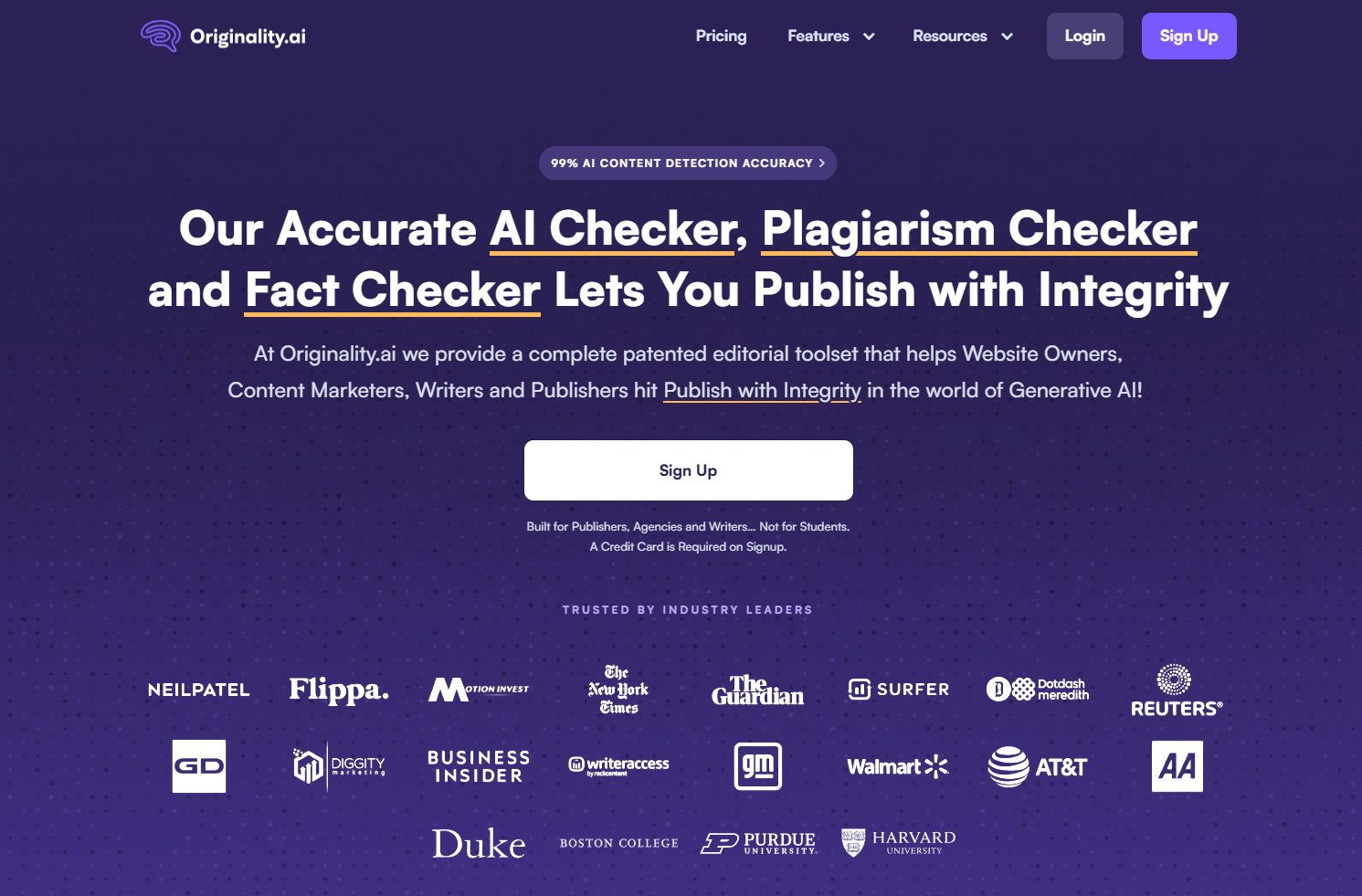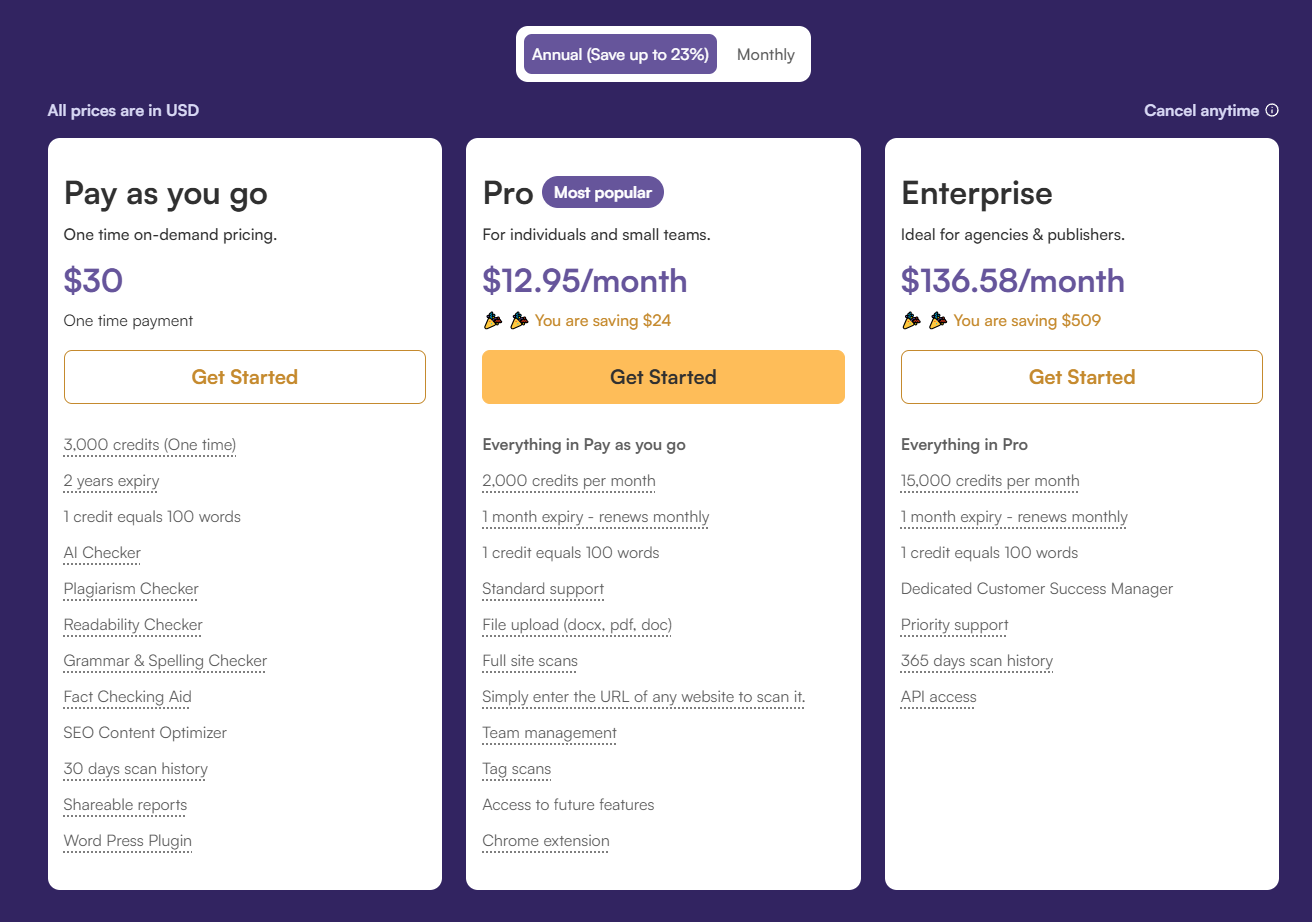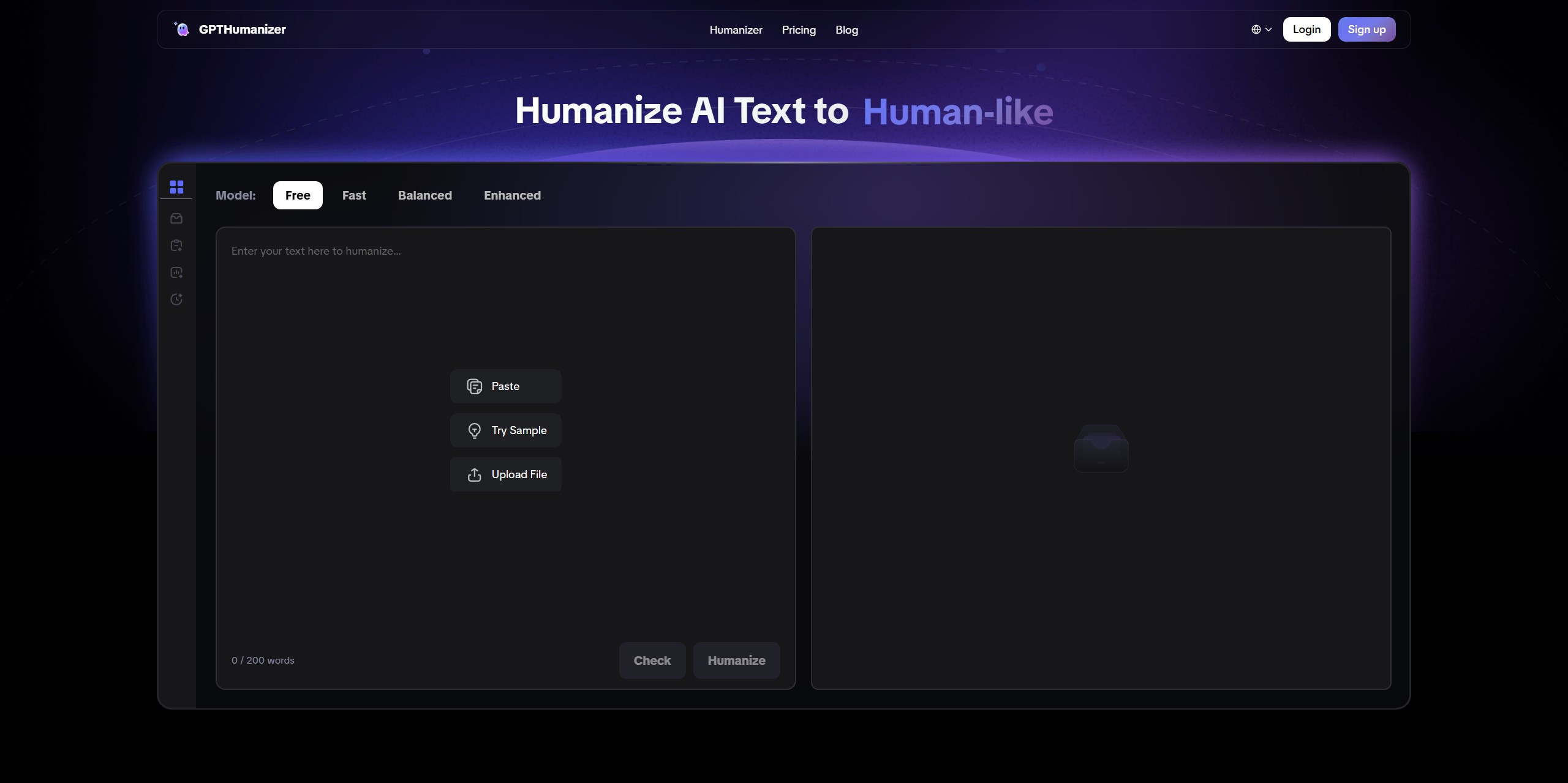Originality AI Review 2025: Features, Pricing & Best Alternative

Distinguishing between AI-generated and human-written content has become an ever-increasing priority in today’s content heavy digital world for publishers, educators, and content marketers. With AI writing tools spreading faster than the fire in a parched forest, you need accurate detection solutions to retain integrity and content authenticity.
Originality AI claims to be the “most accurate AI detector” in the market. It promises to solve your AI content detection problems through advanced detection algorithms and comprehensive content analysis tools. But does it really deliver on its claims, or is there a better solution out there?
We tested Originality AI detector extensively and analyzed testing data to see if it delivers on the accuracy you need for your content verification workflows or if you’re better off looking at other alternatives. Read on to learn more.
What is Originality AI?
Originality AI is a content authentication suite that combines AI detection, plagiarism checking, and readability all in one platform. The tool was founded by Jon Gillham and is targeted toward website owners, content marketers, writers, publishers, and academic institutions that need to verify content authenticity in the AI era.
Its core feature is Originality AI detector. It features multiple detection engines, including the Turbo 3.0 engine, that can analyze different patterns and linguistic markers in content to detect AI content with 99% accuracy (claim). The plagiarism detector is integrated into the scan so that you can run the content against a global database to verify originality. The plagiarism scan is reported to run at 90% accuracy.
The platform also features additional fact-checking capabilities so that you can verify the claims in your content and also test for readability. There are also practical tools like a Chrome extension for quick browser-based scans, bulk file uploads, and team collaboration features for larger organizations.
The platform serves multiple user groups, from academic institutions who want to make sure students are not using AI to generate their assignments, to marketing agencies who need to ensure the quality of work to clients to SEO professionals who want to maintain content standards that search engines value.
That said, we found that the effectiveness varies depending on the type of AI content being analyzed with mixed results reported for newer AI models and edited AI content which begs the question of real-world accuracy versus claims.
Real-World Testing Results
After thorough testing, we found mixed results when it comes to Originality AI detector’s overall ability to detect AI generated content. While this platform offers true detection capabilities, it is largely hampered by a severe lack of accuracy, and specifically an extreme predisposition towards false positives (ie., declaring human content as being AI-generated) on its Turbo 3.0 engine.
In controlled tests of known content, and using different content types, Originality AI performed moderately well on older AI engines, like GPT-3.5, generally producing 80%+ rates of detection. However, performance degraded noticeably when analyzing content from newer models, particularly when that content had been edited or refined by human authors.
During testing, the false positive problem quickly stood out. Several other reviews have pointed out that the tool’s high false positive rate is a major issue, as Originality AI detector misidentifies human-generated text as created by artificial intelligence. This will be particularly problematic when scanning academic and professional writing, which can easily carry some of the telltale patterns often found in AI-generated text.
Speed and user experience testing were largely positive. The platform processed content quickly, spitting out results in seconds for a normal document. The interface was intuitive for simple scanning, but advanced users may find customizations and settings a bit lacking.
Plagiarism detection testing was more consistent, correctly flagging several examples of copied content. The fact-check feature is still fairly rudimentary and in our testing, it had little practical use.
Finally, and most alarmingly, testing also revealed inconsistent results when scanning the same content multiple times, implying that the detection algorithms may not be as stable as advertised. This is concerning for use cases where a false positive could cause significant problems.
Pricing Analysis

Originality AI uses a credit-based pricing structure and offers a range of plans. They have a pay-per-use plan, with a $30 one-off charge to begin with, and $0.01 per 100 words scanned thereafter, which is great for infrequent users who value flexibility.
If you’ll be using the platform regularly, subscription plans are available, starting from $14.95 / month, with quarterly and annual options that work out cheaper. The premium plan is $136.58 / month (billed annually at $1,638.96), compared to $179 / month if billed monthly, offering a saving of $509 per year. The premium plan includes 15,000 credits per month with the option to top up easily if more are needed.
Compared to the rest of the market, Originality.AI is in the mid to high price range for AI detection tools, but the credit-based system can get expensive for high-volume users, as unused credits expire each month. Pay per use works best for occasional users but frequent users would get better value from a flat rate competitor. There’s also no free tier or trial period, creating a barrier to users who want to test the platform before paying.
GPTHumanizer: A Superior Alternative Solution

GPTHumanizer offers a strong alternative for users who want more dependable AI content detection and solutions for AI humanizing. It solves many of the problems that come with using Originality AI. Instead of just focusing on detection like Originality AI detector does, GPTHumanizer gives you a complete solution. It can humanize AI content and make it feel more natural and human.
What sets GPTHumanizer apart is its advanced humanization technology. The platform uses sophisticated algorithms to restructure sentences, vary vocabulary, and adjust writing patterns while preserving original meaning. This approach solves the fundamental problem that detection-only tools cannot: what to do with AI content once it's identified.
For accuracy, GPTHumanizer is more stable than Originality AI, which has had inconsistent results and a higher degree of false positives. That’s important in work environments that rely on precision. The platform also features a more user-friendly interface alongside faster processing, with instant productivity gains.
GPTHumanizer offers exceptional value with transparent pricing starting from a free plan (200 words per request) up to the Pro plan at $18.99/month for 150,000 words, compared to Originality AI’s credit-based system that is more costly and inflexible. The per plan monthly allowance is simple to understand and annual plans are 50% off.
For content marketers who regularly handle AI-generated content, GPTHumanizer’s advanced detection-and-transformation approach to solving the AI detection problem is the better solution. Check out these powerful features at gpthumanizer.ai.
Conclusion
Originality AI presents an ambitious attempt to create a comprehensive content authentication platform, but falls short of its bold accuracy claims in practical application. While there is some convenience to the multi-tool approach and the user interface is user-friendly, the false positive problems and overall unreliable detection results make it a poor fit for mission critical applications.
If you’re looking for a more reliable solution that can actually solve your AI content problem as opposed to just detecting it, a competitor solution like GPTHumanizer will provide greater accuracy, more value, and actual content transformation capabilities that can get to the root of your problem, not just highlight it.
Content authentication is a rapidly developing field, and while Originality AI detector is certainly trying to be a thought leader, the reality does not meet the ambition. Carefully consider your use case’s specific accuracy needs and false positive tolerance before purchasing this solution.
Related Articles

Best AI Humanizers in September 2025: A Hands-On Roundup
Best AI Humanizers in september 2025

What Is a GPT Humanizer? Uses, Limits & Tips
Learn what a gpt humanizer is, how it works, ethical use, and a practical workflow to humanize AI te...

GPTHumanizer FAQs: Everything You Need to Know About this AI Humanizer
Get answers to all your GPTHumanizer questions. Learn how this free AI humanizer improves your writi...